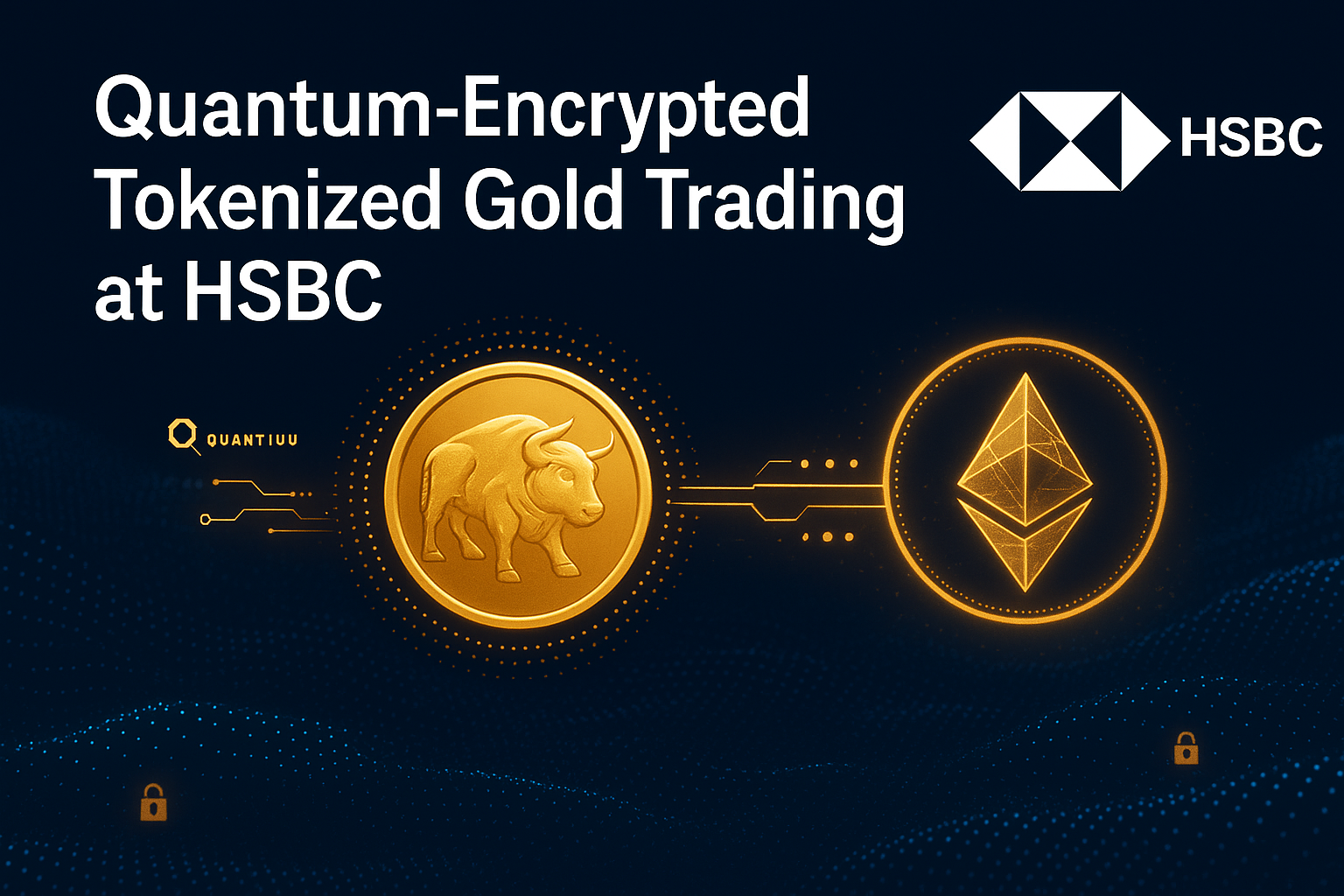In an era where both quantum computing and blockchain technology are rapidly reshaping the global financial landscape, HSBC has taken a groundbreaking step toward future-proofing digital asset security. In partnership with quantum computing innovator Quantinuum, the banking giant is launching a quantum-encrypted tokenized gold trading platform—a pioneering move that could redefine the standards for digital asset protection.
At the heart of this initiative is a powerful integration of post-quantum cryptography and quantum random number generation (QRNG). These two cutting-edge technologies form the core defense against the theoretical, yet increasingly plausible, threat posed by quantum computers to traditional encryption methods.
Gold, Reinvented for the Quantum Era
The tokenization process involves converting physical gold bullion into ERC-20 tokens, allowing it to be seamlessly traded on blockchain networks. However, what sets HSBC’s platform apart is not just the digitization of gold—but how it’s safeguarded.
Post-quantum cryptography ensures that even if quantum computers become capable of breaking today’s cryptographic standards (like RSA or ECC), the digital gold tokens remain secure. Meanwhile, Quantinuum’s quantum random number generator, derived from quantum states of matter, adds an extra layer of unpredictability to key generation—fortifying defenses against sophisticated cyberattacks.
By building on Ethereum’s ERC-20 token standard while employing quantum-hardened security, HSBC is sending a strong message: the future of finance demands security that can stand the test of both time and technology.
Why It Matters
Traditional gold has always been seen as a safe-haven asset. But in a digital economy, safety demands more than just intrinsic value—it requires cryptographic resilience. HSBC’s initiative reflects a growing industry recognition: quantum computing will change everything, including how we secure assets, identities, and transactions.
Tokenized assets are already gaining traction in real estate, art, and securities. Adding quantum-secure gold to this ecosystem represents not just a technological leap, but a philosophical one: that we must build systems today to withstand the threats of tomorrow.
The Bigger Picture
This development sits at the intersection of three major trends:
- The rise of digital assets (tokenized real-world assets or RWAs)
- The accelerating progress in quantum computing
- The fintech sector’s shift toward future-resilient security protocols
HSBC’s move is more than a proof-of-concept—it’s a signal of what’s to come. Financial institutions must rethink risk in a world where encryption can be broken in minutes rather than millennia.
While central banks debate CBDCs and regulators chase after stablecoins, HSBC is quietly laying the foundation for a new kind of financial infrastructure—one where gold isn’t just secure, but quantum-secure.
By merging the timeless appeal of gold with the futuristic security of quantum technologies, HSBC is creating a compelling model for the next generation of digital finance. This isn’t just about innovation—it’s about building trust in a world where change is the only constant.
As quantum computers edge closer to reality, those who prepare now will be the ones who thrive later.




